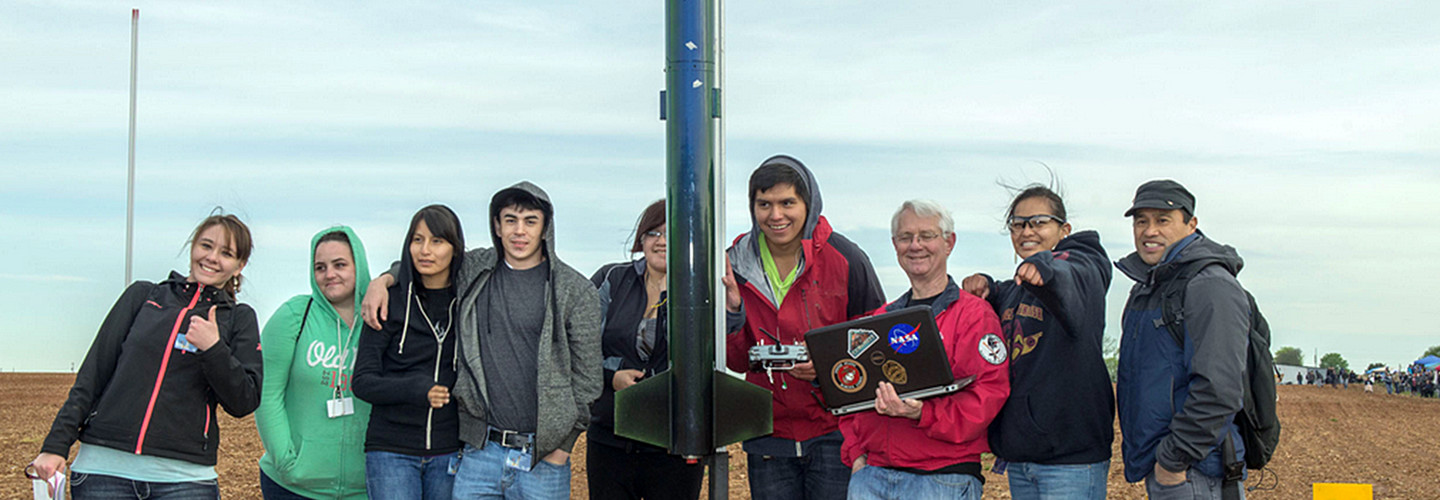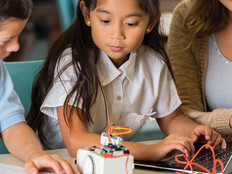STEM Students Blast Off in NASA Launch Event
Teams from middle schools, high schools and colleges competed this month to determine the best-designed student rocket.
Many students have tried their hand at making model rockets, but the rockets launched during the 15th annual NASA Student Launch event were in a whole different stratosphere.
The event kicked off April 11, when 30 teams from across the country gathered at the Marshall Space Flight Center, in Huntsville, Ala. The STEM-focused event lets students apply their classroom lessons to real-world rocketry, and some of the best designs will help advance aerospace designs for NASA.
“Students apply their day-to-day classroom content into authentic projects and results. Their successes today will parlay into impressive resume highlights as they pursue their goals of working in engineering and aerospace industries,” according to a NASA press release.
Students who compete in the event work for more than eight months, submitting reports and reviews of their rocket design, along with creating websites and participating in educational engagement within their communities.
The Student Launch event comprises three separate challenges, according to NASA: one for middle and high school students and two for college students. This year, K–12 students developed and launched rockets that soared more than a mile into the sky before delivering an onboard science-experiment payload and landing using parachutes.
Meanwhile, college students were in competition to win up to $50,000 in prizes for two separate challenges, both involving robotic rocket-launch systems.
In the Mini Mars Ascent Vehicle (MAV) challenge, students designed an autonomous ground support equipment (AGSE) vehicle that captured a payload and launched it 3,000 feet into the air, by rocket. In the Maxi MAV challenge, students designed an AGSE vehicle that could perform a complicated task, including capturing a payload, containing it within a rocket, elevating the rocket at an angle, inserting a motor igniter and launching the rocket 3,000 feet into the air.
The day-long proceedings can be viewed on NASA’s UStream channel.
Broadcast live streaming video on Ustream
Winners of the Student Launch will be announced in May.
Here are some social media highlights of this year's launch:
.@unccharlotte before they head to the pad. They are also participating in #MAVPrize. Good luck! #StudentLaunch pic.twitter.com/EyxyS7VjM6
— NASA Marshall News (@NASA_Marshall) April 11, 2015
Iowa State won the award for the best looking rocket. Go Cyclones!@NASA_LaunchFest #StudentLaunch pic.twitter.com/42cVPsAVwZ
— Gordie (@BoosterBud) April 11, 2015
Been a perfect day for rocket launches at Bragg Farms for @NASA_LaunchFest #StudentLaunch pic.twitter.com/8hzc3FQtzB
— Gordie (@BoosterBud) April 11, 2015
Next round is underway with another liftoff! #StudentLaunch pic.twitter.com/aNwsyN4OGe
— Orbital ATK (@OrbitalATK) April 11, 2015
These little fans get excited as they push the red button to launch a rocket! #studentlaunch #mavchallenge pic.twitter.com/0GZRw95MtO
— NASA_SLS (@NASA_SLS) April 11, 2015








